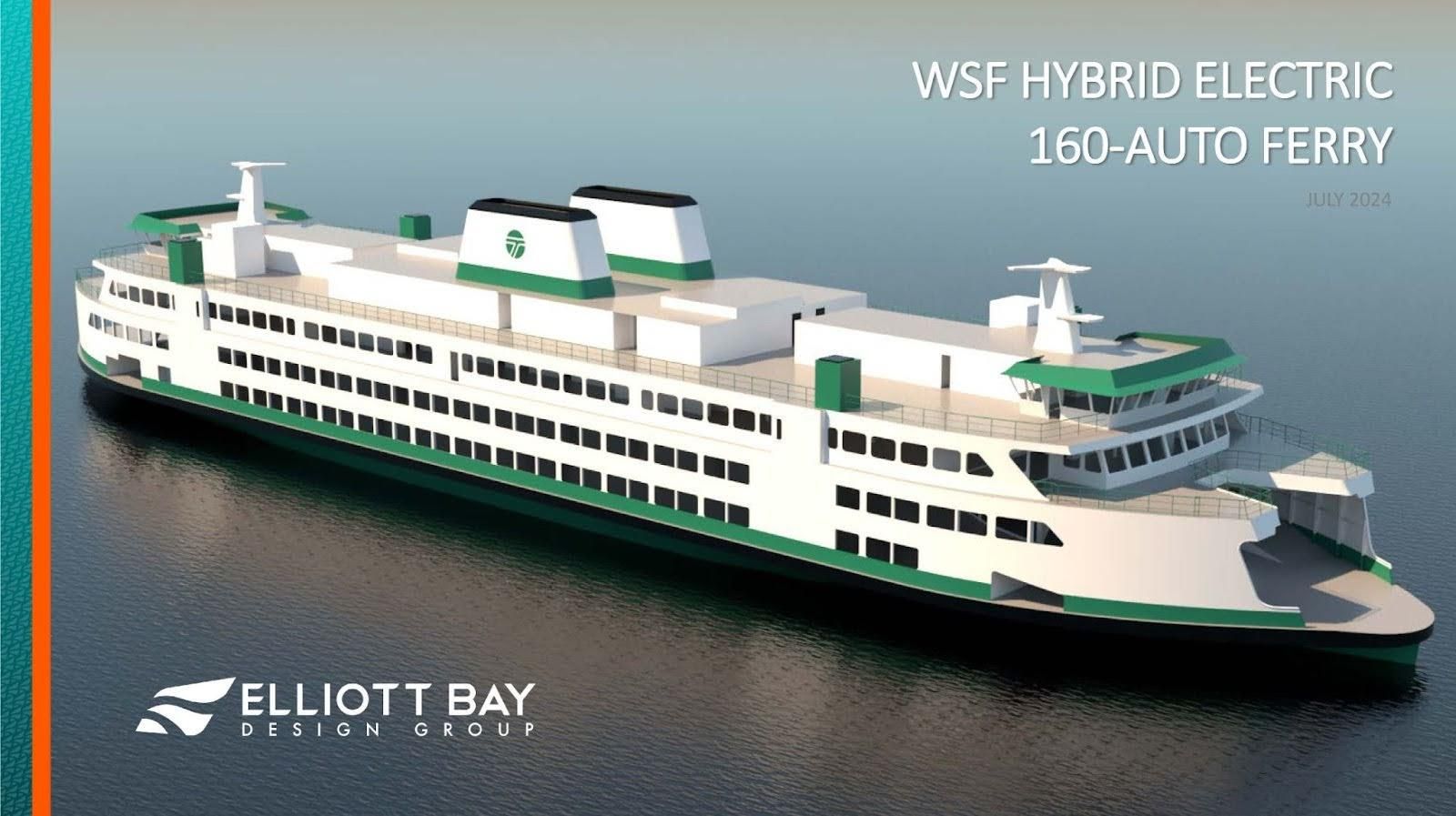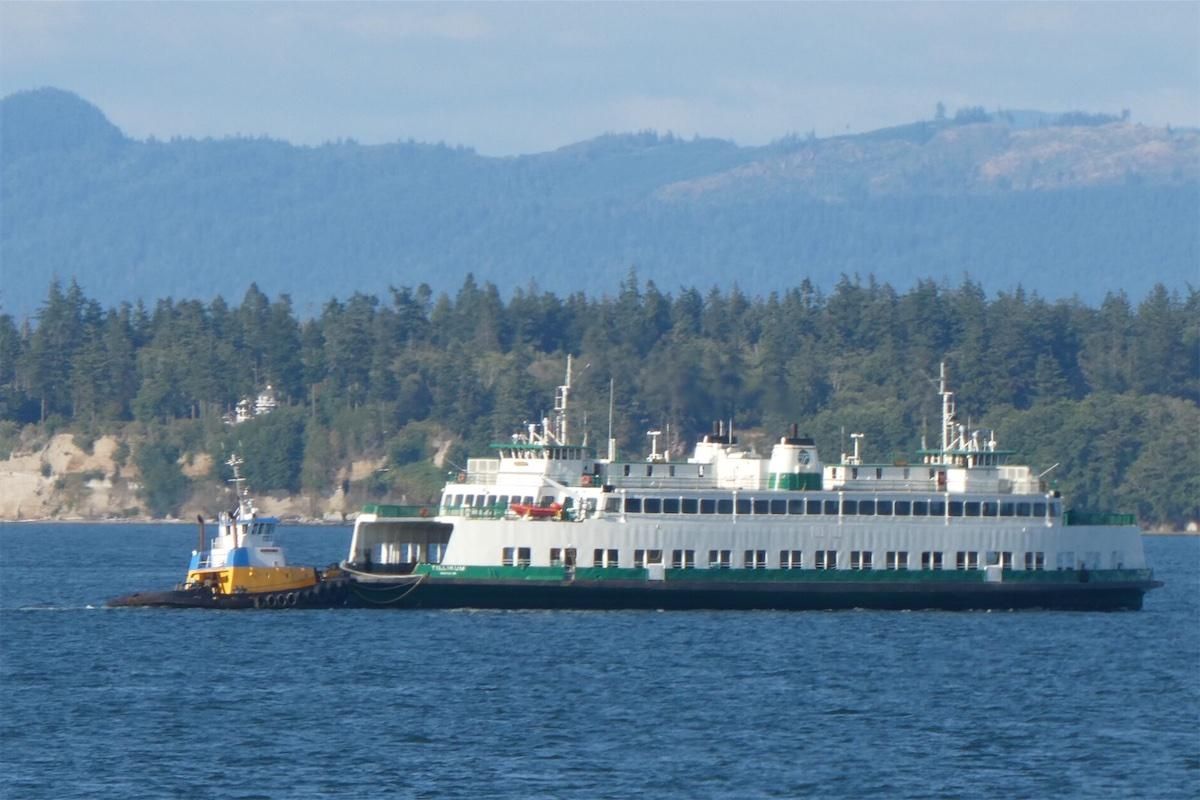by Tom Banse and Jerry Cornfield, Washington State Standard
Washington Gov. Bob Ferguson celebrated the state’s award of a $715 million contract for three hybrid electric ferries in July as a milestone in his drive to improve the nation’s largest ferry system.
But under that contract, Washington State Ferries riders will wait a year longer than planned for a new plug-in vessel to bring some relief to the stressed-out system.
That’s because in exchange for a bid that was hundreds of millions of dollars less than a local competitor, the Florida-based firm Ferguson selected will have until 2030 to deliver the first of the three ferries.
Washington State Ferries urgently needs new boats to improve its reliability and restore service to pre-pandemic levels. This is the first time in more than 50 years that Washington has turned to an out-of-state shipbuilder to procure new car ferries.
The state specified, as part of the bid terms, that the first boat arrive in 2029. But the final ferry construction contract shows Eastern Shipbuilding got changes to deliver the first boat in August 2030, the second boat by August 2031, and a third the following year.
‘Cost savings outweighed the longer schedule’
The decision to prioritize taxpayer savings over faster delivery was glossed over in the summer. The governor made the final call on the contract award.
“Eastern Shipbuilding’s bid came in tens of millions of dollars lower than the competing bid per vessel, though they asked for an additional 12 months beyond the original 48-month timeline,” ferry system spokesperson Kurt Workman explained via email.
“We believe their request reflects a realistic timeline for them to deliver the first ferry,” Workman added. “After an extensive evaluation process, we determined the cost savings outweighed the longer schedule and awarded the contract to Eastern.”
Eastern Shipbuilding declined to answer specific questions about why it wanted five years to complete the first ferry. Instead, the company emailed a one-paragraph statement from its CEO, Joey D’Isernia.
“Over the past 50 years, we have delivered more than 350 highly complex vessels with a 99% on-schedule rate,” D’Isernia said. “Our proposal for the Washington State Ferries was based on decades of experience building ships with similar requirements and levels of complexity, making it realistic in both cost and schedule.”

photo: A rendering of the new hybrid-electric ferry design that will be built in Florida. (Photo courtesy of WSDOT)
Only one other shipyard, Nichols Brothers, bid to construct the new plug-in hybrid ferries, each capable of carrying up to 160 cars and 1,500 passengers. The Whidbey Island and Everett-based shipyard’s total bid for three vessels was more than $350 million higher than Eastern’s.
Gavin Higgins, chief executive officer of Nichols Brothers, said their submission met the state’s four-year delivery timeline for the first vessel. “The need for speed to get these delivered was a huge issue” for the state, he recalled.
“We bid to the specifications. We didn’t know anything about the added year until I got a call to let me know we weren’t getting the bid,” he said.
At one point earlier this year, Nichols Brothers and a range of allies from around the north Puget Sound lobbied the governor unsuccessfully to split the contract for the new ferries to secure local jobs and boost the region’s shipbuilding industry.
Frequent ferry riders such as Amy Drayer of Vashon Island have already steeled themselves for news about delivery delays, given the newness of the hybrid electric propulsion system the state chose. Drayer sits on the steering committee of Islanders for Ferry Action.
“We would not be surprised if the delivery schedule slips even further,” she said dolefully. “We’re building something brand new. Any time you build something new, there’s a learning curve.”
Washington inducted its first plug-in ferry into its fleet this past summer when the Vigor Seattle shipyard completed a conversion of the diesel ferry Wenatchee to hybrid electric propulsion.
That project went way over budget, was completed nearly a year late, and the boat has had mechanical issues since entering service, which might be a reason Washington State Ferries was open to allowing additional time for delivery of the new boats.
Drayer said she does not accept the time versus money framing of the decision.
“If it were time versus money, we’d be ordering clean diesel engines” for the new ferries, Drayer said before adding that her group isn’t advocating to reopen the ferry design at this point.
Hurricane risks
Eastern Shipbuilding also requested a grace period in case a hurricane damages its Florida Panhandle facilities while the new ferries are under construction.
The revised contract terms that Washington accepted suspend late delivery penalties in the event of a hurricane. Otherwise, Eastern Shipbuilding could be penalized $7,500 per day for every day past the agreed delivery deadlines, escalating to $15,000 per day if a delay extends beyond three months.
Eastern Shipbuilding experienced significant damage in 2018 during Hurricane Michael. At the time, the shipbuilder was under contract to build three new ferries for the Staten Island line in New York.
According to the Staten Island Advance, the three 4,500-passenger Staten Island ferries were each delivered more than a year late due to delays attributed to the hurricane and then COVID-19.
Higher price, added uncertainty
Washington State Ferries currently has 21 vessels of various sizes and ages in its fleet. The agency’s long-range plan is to grow to 26 ferries to provide reliable service on every route, with allowances for maintenance tie-ups and a vessel in reserve.
The agency tentatively plans to deploy its new ferries to the Mukilteo-Clinton run first, probably followed by the Seattle-Bremerton route.
On the new ferries, the center of the ship’s hold will be packed with racks of water-cooled rechargeable batteries so each ferry can sail fully on electric power most of the time. The engine room will also feature twin diesel generators as a backup source of propulsion.
Assuming they use green electricity to recharge at the terminals, the new ferries should achieve a large reduction in fuel consumption and an associated reduction in global warming emissions.
The state’s target is to convert six existing vessels to hybrid-electric power and build 16 new plug-in boats — all by 2040. Both Democratic and Republican lawmakers have voiced doubts this year about whether this timeline will be affordable or achievable.
Republished with permission. Read the original article.
Washington State Standard is part of States Newsroom, a nonprofit news network supported by grants and a coalition of donors as a 501c(3) public charity. Washington State Standard maintains editorial independence. Contact Editor Bill Lucia for questions:
